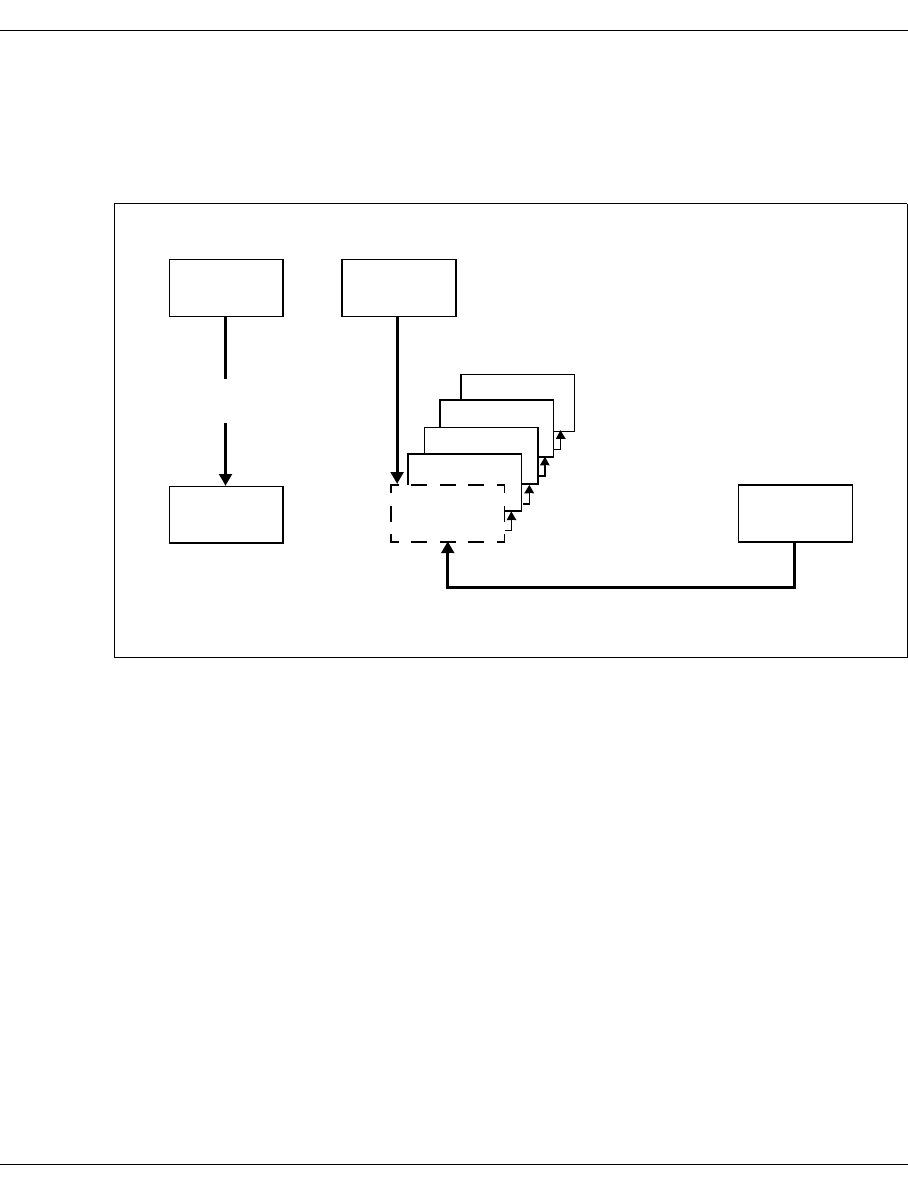
Types of access Schema DDL
96 U929-J-Z125-9-76
ORDER IS FIRST
Specifies the reverse order to that in which the member records were chronologically
entered.
Figure 23: Record sequence for ORDER IS FIRST
ORDER IS NEXT/PRIOR
If this type of ordering is specified, the database programmer has the possibility of estab-
lishing a certain order when storing the member records.
The CRS (current record of set), i.e. the record of a set referred to last, is used as a
reference point for positioning the record to be stored. Thus the CRS determines:
– the set occurrence, and
– the position within the set occurrence.
UDS/SQL places the record to be stored:
– immediately behind the CRS if ORDER IS NEXT, or
– immediately before the CRS if ORDER IS PRIOR.
If automatic selection of a set occurrence has been specified (see the section “Determining
set occurrence selection” on page 103), UDS/SQL automatically makes the owner record
of the set occurrence the current record of set (CRS). In this case, ORDER IS NEXT has
the same effect as ORDER IS FIRST.
12.2.81
PURCHASE-
14.2.81
14.2.81
13.2.81
PURCH-ORD-
RECEIVED
FIRST
SUPPLIER Moore
12.2.81
ORDER


















